I'm trying to draw two gaussians distributions in some subplots. This is the result:

And here is the code
import numpy as np
import numpy.random as rnd
import matplotlib.pyplot as plt
from mpl_toolkits.axes_grid1 import make_axes_locatable
mu_x1 = 3
sig_x1 = 2
mu_x2 = 3
sig_x2 = 0.5
N = int(1e3)
gaussian1 = rnd.normal(mu_x1, sig_x1, N)
gaussian2 = rnd.normal(mu_x2, sig_x2, N)
fig = plt.figure()
ax1 = plt.subplot2grid(shape = (3, 3),
loc = (1, 0),
rowspan = 2,
colspan = 2,
fig = fig
)
hist2d = ax1.hist2d(gaussian1,
gaussian2,
bins = 100,
density = True,
cmap=plt.cm.jet
)
fig.colorbar(hist2d[3], ax=ax1)
ax1.set_xlabel("$x_1$")
ax1.set_ylabel("$x_2$")
ax2 = plt.subplot2grid(shape = (3, 3),
loc = (0, 0),
rowspan = 1,
colspan = 2,
fig = fig
)
ax2.hist(gaussian1,
bins = 100
)
ax2.xaxis.set_ticks_position('top')
ax2.set_xlabel("$x_1$")
ax2.xaxis.set_label_position('top')
ax2.set_ylabel("Cuentas")
ax3 = plt.subplot2grid(shape = (3, 3),
loc = (1, 2),
rowspan = 2,
colspan = 1,
fig = fig
)
ax3.hist(gaussian2,
bins = 100,
orientation=u'horizontal')
ax3.yaxis.set_ticks_position('right')
ax3.yaxis.set_label_position('right')
ax3.set_xlabel("Cuentas")
ax3.set_ylabel("$x_2$")
plt.show()
It looks good but not as I want. I want the x axis of the middle subplot to be as large as the the x axis of the subplot above, so they coincide. The problem is the colorbar. I would like to move the colorbar outside the middle subplot to do what I want. I looked some info and I arrived to:
Here the code
fig = plt.figure()
ax1 = plt.subplot2grid(shape = (4, 3),
loc = (1, 0),
rowspan = 2,
colspan = 2,
fig = fig
)
hist2d = ax1.hist2d(gaussian1,
gaussian2,
bins = 100,
density = True,
cmap=plt.cm.jet
)
#fig.colorbar(hist2d[3], ax=ax1)
ax4 = plt.subplot2grid(shape = (4, 3),
loc = (3, 0),
rowspan = 1,
colspan = 2,
fig = fig
)
fig.colorbar(hist2d[3], cax=ax4, orientation="horizontal")
ax1.set_xlabel("$x_1$")
ax1.set_ylabel("$x_2$")
ax1.axhline(mu_x2 + sig_x2*n2,c="k")
ax1.axhline(mu_x2 - sig_x2*n2,c="k")
ax1.axvline(mu_x1 + sig_x1*n1,c="k")
ax1.axvline(mu_x1 - sig_x1*n1,c="k")
ax2 = plt.subplot2grid(shape = (4, 3),
loc = (0, 0),
rowspan = 1,
colspan = 2,
fig = fig
)
ax2.hist(gaussian1,
bins = 100
)
ax2.xaxis.set_ticks_position('top')
ax2.set_xlabel("$x_1$")
ax2.xaxis.set_label_position('top')
ax2.set_ylabel("Cuentas")
ax2.axvline(mu_x1 + sig_x1*n1,c="k")
ax2.axvline(mu_x1 - sig_x1*n1,c="k")
#ax2.set_xticks([])
ax3 = plt.subplot2grid(shape = (4, 3),
loc = (1, 2),
rowspan = 2,
colspan = 1,
fig = fig
)
ax3.hist(gaussian2,
bins = 100,
orientation=u'horizontal')
ax3.yaxis.set_ticks_position('right')
ax3.yaxis.set_label_position('right')
ax3.set_xlabel("Cuentas")
ax3.set_ylabel("$x_2$")
ax3.axhline(mu_x2 + sig_x2*n2,c="k")
ax3.axhline(mu_x2 - sig_x2*n2,c="k")
The problem now is that the colorbar is filling a full subplot, it is too big and it is hidding the ticks of the subplot above.
Any idea to solve it?

